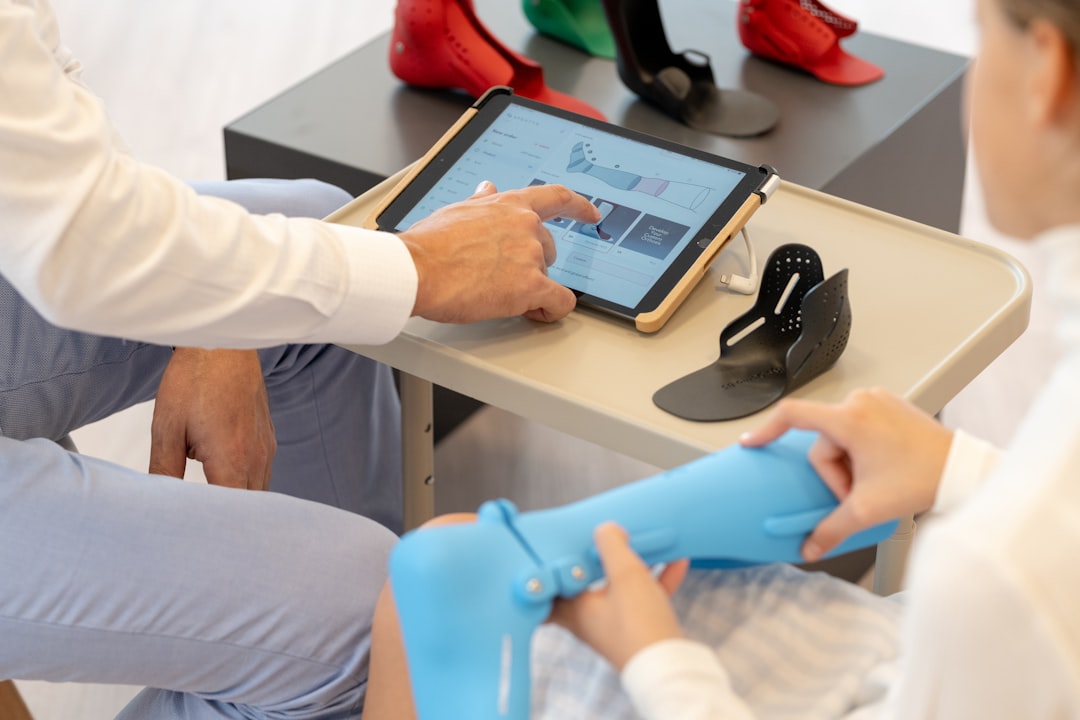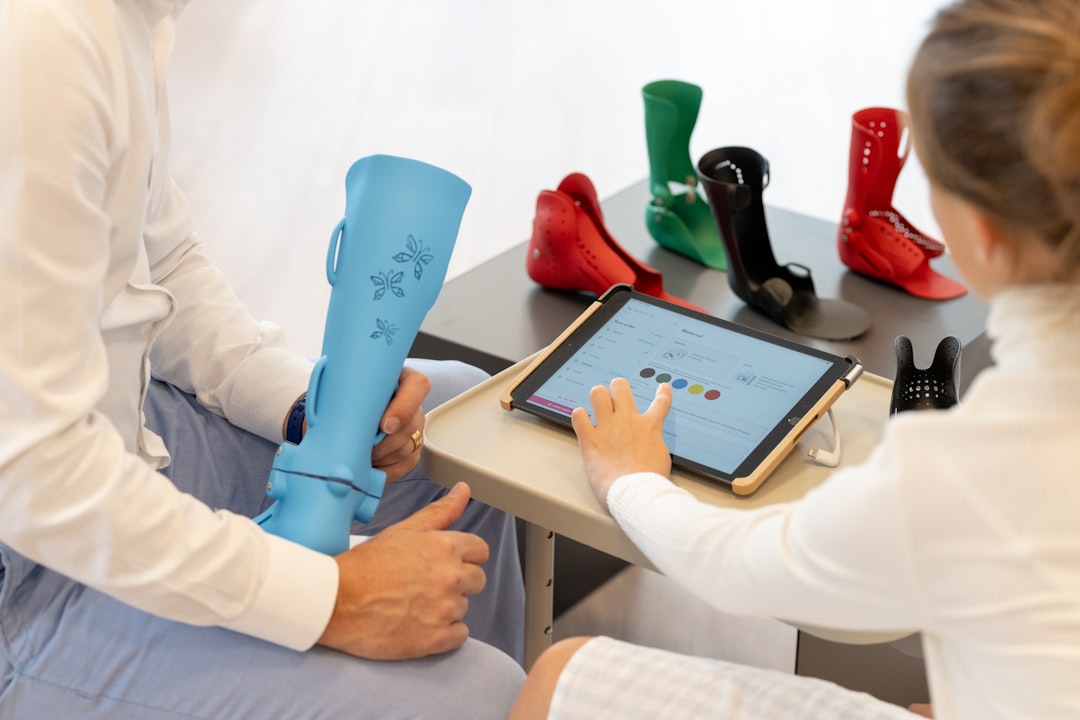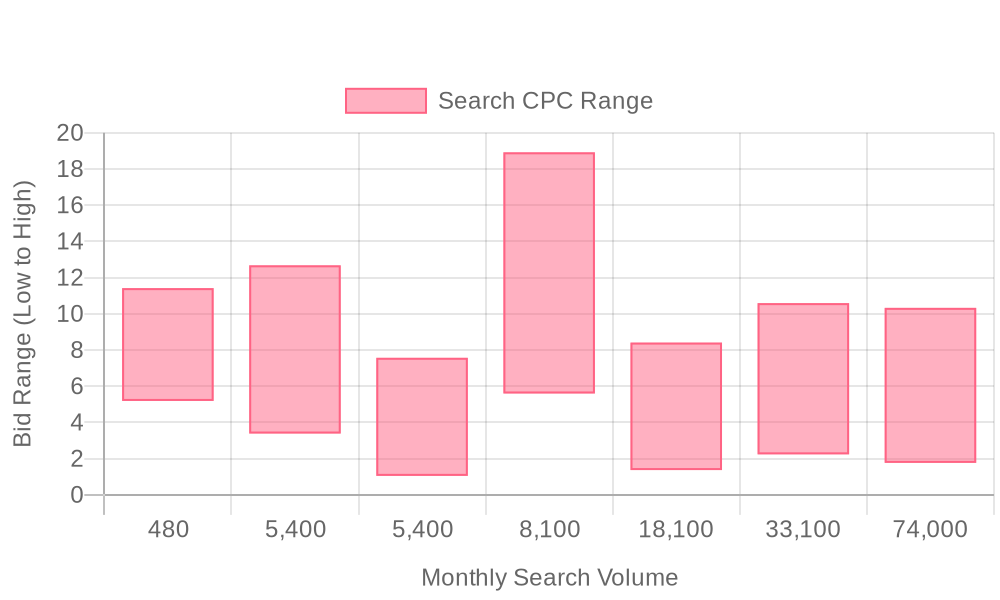
Supercharge your lead generation with a FREE Google Ads audit - no strings attached! See how you can generate more and higher quality leads
Get My Free Google Ads AuditFree consultation

No commitment
Supercharge your lead generation with a FREE Google Ads audit - no strings attached! See how you can generate more and higher quality leads
Get My Free Google Ads AuditFree consultation

No commitment
In today's fiercely competitive medical technology landscape, mastering the art of leveraging Google Ads is essential for driving growth and capturing market share. The absence of effective lead tracking can result in overlooked high-value prospects and untapped opportunities. By integrating modern marketing tools, medical technology companies can now target healthcare professionals at the precise moment they're seeking innovative solutions, ensuring no potential lead goes unnoticed. This guide will provide you with a structured approach to integrating Google Ads into your broader marketing strategy while ensuring compliance with healthcare advertising regulations.

Integrating Google Ads into a medical technology marketing strategy elevates your ability to reach clinical decision-makers, procurement teams, and specialized healthcare professionals. Modern B2B revenue teams must capitalize on every data signal to engage high-value prospects before competitors, using advanced analytics and unified lead tracking to close the loop between marketing and sales.
A data-driven approach ensures alignment of Google Ads with broader multi-channel marketing efforts. By connecting campaign data with CRM and offline sales touchpoints, revenue teams can measure true ROI while identifying which audiences are most likely to convert. When anonymous web visitors interact with your content, new solutions now enable marketers to match these visits to real companies, automatically enriching customer match lists for more precise targeting within Google Ads for Medical Technology campaigns. For an overview of Google Ads features and benefits, see the Google Ads platform. This data sync transforms one-off ad interactions into actionable sales opportunities and allows for immediate follow-up, closing the gap between marketing engagement and revenue outcomes.
Ready to transform your medical technology lead generation? Get started for free with Sona.

Medical technology marketers face high stakes in capturing the right attention at precisely the right moments. Google Ads enables these teams to access healthcare decision-makers and practitioners when they are actively researching or evaluating solutions, which is essential for advancing complex sales cycles and launching innovative products. Learn more about digital marketing strategies for B2B growth in our marketing analytics blog.
By combining granular targeting, live intent tracking, and integrated attribution, Google Ads provides medical technology teams with a robust foundation for scalable, compliant, and high-impact digital marketing. Get started for free with Sona.


Growth-focused medical technology marketers consistently outperform by pinpointing untapped segments and systematically refining their targeting approach. Unlocking these opportunities starts with vertical keyword targeting, which ensures specialized medical products and solutions surface for highly specific queries. By mapping out granular keyword sets around emerging clinical use cases or device subtypes, teams prevent lead leakage from overlooked search intent. This approach captures high-value prospects that may not yet exist in your CRM, driving pipeline growth from new market entrants or under-served specialties. Explore how Google Search Ads can help you reach these prospects at the moment they’re searching for solutions.
Competitive analysis tools play a pivotal role in revealing campaign gaps missed by others in the sector. By scrutinizing competitor ad spend, keyword coverage, and messaging, marketers can spot whitespace—unique combinations of procedures, device features, or patient pain points not being addressed. These insights empower revenue teams to reallocate budget into high-ROI segments before they become saturated. With advanced visitor identification, teams move beyond anonymous web traffic to pinpoint actual companies researching your solutions, making it possible to prioritize outreach and adjust campaigns in real time based on verified in-market activity.
Industry placements within healthcare-specific forums and trusted medical networks provide a direct channel to targeted buyers and influencers. Optimizing placements in these environments increases brand credibility and delivers messaging where intent is highest. With dynamic audience syncing, marketers keep pace as leads progress through the funnel, ensuring only qualified prospects receive tailored offers or educational content. This responsive, data-driven approach minimizes wasted spend and maximizes the impact of every impression by aligning digital outreach with verified buying signals and up-to-date account intelligence.
Ready to take action? Get started for free with Sona.
Refined audience segmentation drives measurable results for medical technology marketers. By connecting targeting precision to key moments in the healthcare buying cycle, campaigns reach the right decision makers and accelerate the path to conversion. For additional strategies on refining your approach, explore our B2B marketing playbooks.
Ready to see these strategies in action? Get started for free with Sona.

| Industry | Keyword | Monthly Search Volume | Competition Level | Low Bid | High Bid |
| Medical Technology | medical guardian alert system | 480 | HIGH | 5.19 | 11.42 |
| Medical Technology | fall detection devices | 5400 | HIGH | 3.39 | 12.68 |
| Medical Technology | portable ultrasound machine | 5400 | HIGH | 1.05 | 7.57 |
| Medical Technology | health information technology | 8100 | MEDIUM | 5.6 | 18.92 |
| Medical Technology | x ray tech | 18100 | LOW | 1.37 | 8.41 |
| Medical Technology | medical technology | 33100 | LOW | 2.24 | 10.59 |
| Medical Technology | ultrasound tech | 74000 | LOW | 1.77 | 10.33 |
Selecting targeted keywords is foundational in medical technology advertising. The right terms ensure campaigns reach healthcare practitioners, procurement leads, and decision-makers who are actively seeking specialized solutions. Effective keyword selection also filters out irrelevant clicks, focusing budget on prospects with real commercial intent. For more insights on optimizing B2B campaigns, explore our marketing blog.
Real-time keyword analysis and intent data signal shifts in market demand, allowing teams to adjust bids and messaging instantly when new product categories emerge or regulatory changes reshape buying cycles. By integrating visitor identification, marketers can map keyword-driven site visits to specific organizations, revealing which accounts are researching high-value terms and which content resonates most. This insight allows B2B teams to shift budget toward accounts showing elevated intent or to launch dynamic retargeting for decision-makers progressing through the funnel.
Syncing enriched keyword audiences between CRM and Google Ads ensures that only qualified leads receive tailored messaging as they move from awareness to evaluation. This unified approach enables continuous optimization, higher Google Ads ROI, and precise measurement of which keyword groups drive both online and offline conversions across healthcare digital marketing campaigns. If you’re ready to take your keyword targeting and audience segmentation to the next level, get started for free with Sona.
A structured campaign execution framework is essential for B2B revenue teams in medical technology to achieve stronger ROI and sustained lead quality. Each step below is designed to minimize wasted spend, improve compliance, and deliver measurable sales pipeline impact as you scale Google Ads for Medical Technology.
The foundation of effective medical technology advertising begins with robust keyword segmentation. Focus on intent-driven phrases specific to your device types, procedures, and clinical settings. Local modifiers such as city, state, or region help capture high-value leads searching for vendors or solutions nearby. By continuously analyzing search terms and layering in negative keywords, you can eliminate irrelevant clicks and ensure ads are triggered by high-conversion prospects.
Integrating advanced visitor identification lets you connect search behavior to actual companies and buying committees, not just anonymous clicks. This intelligence enables you to refine keyword lists in real time, shifting spend toward queries that attract the most relevant enterprise accounts. As new high-intent visitors emerge, dynamic audience building keeps your targeting fresh and aligned with the latest market demand.
Craft ad copy that addresses the pain points unique to MedTech buyers: compliance needs, clinical efficacy, and operational efficiency. Highlighting regulatory certifications or proprietary technology builds trust with both healthcare professionals and procurement teams. Use clear calls to action and tailor messaging to each segment, ensuring your copy resonates with decision-makers in different specialties or facility types.
Leveraging real-time intent signals, you can dynamically update ad messaging for accounts showing increased buying activity or engagement with your educational content. This precision reduces wasted impressions and amplifies impact with audiences who are actively evaluating solutions. Syncing enriched lead data directly into your ad platform ensures your ads speak directly to the evolving needs of your most valuable prospects.
Each ad group should map to a dedicated landing page, ensuring message match and maximizing conversion rates. Include strong, visible CTAs such as “Request a Demo” or “Download Clinical Data,” tailored to the decision stage of your target audience. Surface key differentiators—like FDA clearance or integration with hospital EHR systems—to reinforce credibility and drive action.
Sophisticated attribution tools empower you to track both online and offline actions, connecting digital ad clicks to sales consults, product trials, or on-premise demos. By linking CRM and sales data back to specific landing page journeys, you can pinpoint which assets and offers convert best, then iterate quickly to multiply results across product lines and regions.
Optimize campaign performance by monitoring both macro and micro conversions, not just final sales. Track early indicators such as whitepaper downloads or webinar registrations to identify high-potential accounts before they reach out to sales. Utilize smart bidding strategies that automatically allocate budget to the audience segments and keywords with the highest likelihood of pipeline impact.
Real-time funnel analysis enables you to address gaps fast, such as poor engagement from non-tailored campaigns or shifts in buyer behavior due to new regulatory guidance. With enriched audience and engagement data syncing across CRM and ad platforms, you can continuously update targeting, creative, and bidding logic based on the latest account activity. This approach ensures you capture every opportunity for conversion, while maintaining Google Ads compliance and maximizing healthcare PPC efficiency. Get started for free with Sona.

Expanding your medical technology presence demands a strategic blend of precision advertising, audience nurturing, and trusted partnerships. Rapid market shifts and evolving buyer intent make it essential to reach the right stakeholders with timely, relevant messaging that resonates across both clinical and executive audiences.
Ready to accelerate your medical technology growth? Get started for free with Sona.
Effectively leveraging Google Ads for marketing medical technology products can be a game-changer in expanding your reach and enhancing your brand's presence. Throughout this article, we’ve explored the complexities of utilizing Google Ads within the medical technology sector, focusing on adhering to advertising policies, optimizing campaigns, and employing best practices for maximum impact.
Navigating the stringent compliance requirements and competitive landscape of medical technology advertising can be daunting. However, by strategically crafting your ad campaigns, targeting the right audience, and continually analyzing performance data, you can overcome these challenges and drive meaningful results. The integration of comprehensive data insights into your advertising strategy not only ensures compliance but also maximizes your marketing ROI.
Imagine transforming your medical technology marketing efforts into a streamlined, data-driven process that consistently delivers results. By embracing innovative solutions and staying informed about industry best practices, you're setting the stage for sustained growth and success. Now is the perfect time to take actionable steps toward revolutionizing your approach to Google Ads.
To truly harness the potential of your marketing campaigns, consider leveraging our platform. Start for free to experience its capabilities and discover how it can unify your go-to-market data, offering actionable insights that drive success in the medical technology space.
Best practices include aligning campaigns with multi-channel engagement, identifying and importing anonymous visitors, creating keyword strategies that meet regulatory requirements, designing dynamic landing pages, and continuously optimizing for ROI and engagement.
To ensure HIPAA compliance, use regulatory-safe language in your keyword strategies and ensure all campaign assets meet Google Ads healthcare policy requirements.
The budget should be flexible to shift towards high-converting accounts in real time, based on unified intent data across digital touchpoints.
Use high-intent keywords tied to purchasing decisions or specific medical devices, and incorporate niche and technical terms related to procedures and regulatory compliance.
Develop ad copy that addresses compliance needs, clinical efficacy, and operational efficiency, highlighting regulatory certifications and proprietary technology, with clear calls to action tailored to each segment.
Join results-focused teams combining Sona Platform automation with advanced Google Ads strategies to scale lead generation

Connect your existing CRM

Free Account Enrichment

No setup fees
No commitment required

Free consultation

Get a custom Google Ads roadmap for your business
Join results-focused teams using Sona Platform automation to activate unified sales and marketing data, maximize ROI on marketing investments, and drive measurable growth

Connect your existing CRM

Free Account Enrichment

No setup fees
No commitment required

Free consultation

Get a custom Google Ads roadmap for your business
Over 500+ auto detailing businesses trust our platform to grow their revenue
Join results-focused teams using Sona Platform automation to activate unified sales and marketing data, maximize ROI on marketing investments, and drive measurable growth

Connect your existing CRM

Free Account Enrichment

No setup fees
No commitment required

Free consultation

Get a custom Google Ads roadmap for your business
Over 500+ auto detailing businesses trust our platform to grow their revenue
Join results-focused teams using Sona Platform automation to activate unified sales and marketing data, maximize ROI on marketing investments, and drive measurable growth

Connect your existing CRM

Free Account Enrichment

No setup fees
No commitment required

Free consultation

Get a custom Google Ads roadmap for your business
Over 500+ auto detailing businesses trust our platform to grow their revenue
Join results-focused teams using Sona Platform automation to activate unified sales and marketing data, maximize ROI on marketing investments, and drive measurable growth

Connect your existing CRM

Free Account Enrichment

No setup fees
No commitment required

Free consultation

Get a custom Google Ads roadmap for your business
Over 500+ auto detailing businesses trust our platform to grow their revenue
Our team of experts can implement your Google Ads campaigns, then show you how Sona helps you manage exceptional campaign performance and sales.
Schedule your FREE 15-minute strategy sessionOur team of experts can help improve your demand generation strategy, and can show you how advanced attribution and data activation can help you realize more opportunities and improve sales performance.
Schedule your FREE 30-minute strategy sessionOur team of experts can help improve your demand generation strategy, and can show you how advanced attribution and data activation can help you realize more opportunities and improve sales performance.
Schedule your FREE 30-minute strategy sessionOur team of experts can help improve your demand generation strategy, and can show you how advanced attribution and data activation can help you realize more opportunities and improve sales performance.
Schedule your FREE 30-minute strategy sessionOur team of experts can help improve your demand generation strategy, and can show you how advanced attribution and data activation can help you realize more opportunities and improve sales performance.
Schedule your FREE 30-minute strategy session





Launch campaigns that generate qualified leads in 30 days or less.
